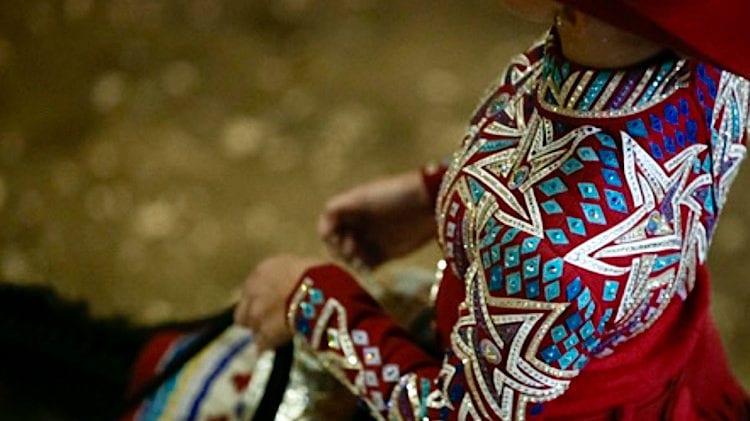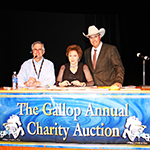Horsemanship is a detail-oriented class that highlights an exhibitor’s ability to ride effectively, correctly, and effortlessly. From large fast circles to lead changes to spins, horsemanship truly tests an equestrian’s limits. The class requires strength and poise. When everything comes together, watching a talented horsemanship duo looks seamless and beautiful.
Every class requires an exhibitor to use essential horsemanship skills to perform. A strong core, confidence, and solid leg muscles translate between all disciplines and styles of riding.
What are the core components of success? How can one improve their abilities? These are the questions we answer through the ten things to know if you love horsemanship.
Make the ride look effortless
All top horsemanship competitors make their rides look effortless. The goal is to have onlookers think, “Wow, that looks so easy.” That ability to create a pattern that flows is a goal all horsemanship riders strive for. It is challenging but, separates the excellent competitor from the rest of the pack.
AQHA Judge John Briggs comments on how to make a ride look seamless, “I’d tell the rider to quiet their seat. I see a lot of riders overusing their seat, pushing and driving, which causes the horse to react with too much impulsion.“ An exhibitor must use their seat for effective, clear communication. Overuse of the seat or any other riding aid leads to problems in the show pen.
Practice, practice, practice
The biggest secret to success is not a secret at all…practice. Hours need to be put in the saddle to become a better equestrian. Many horsemanship exercises can be found in various articles, YouTube videos, etc.
Many top trainers and experienced exhibitors have said that riding English helps with their overall riding skills. Various equitation exercises help build the leg and core strength required for the horsemanship.
Horsemanship takes time to improve on; it is an extremely competitive class. Exhibitors must let themselves make mistakes, then take those mistakes home and practice until they get it correct.
Study your patterns
An essential aspect of the horsemanship is hitting every mark precisely as the pattern calls for it. Preparation of your “spots” is needed before entering the show pen. Set a roadmap for yourself and follow it. Visual markers are beneficial when preparing a pattern.
Multi-carded Judge Kelly Boles Chapman suggests, “Many riders seem to benefit from a walkthrough of the pattern, noting what path they plan to follow, and where markers or cones are located. A combination of the physical walkthrough, even with a smaller version of a pattern set up in an aisle way and reviewing the pattern words and graphic, is a good approach for many.”
Studying the pattern and rail work videos after the class is also beneficial. Review strengths, weaknesses, and what to change for the future. Briggs comments, “There is so much to learn from your patterns and rail work. It’s important to talk to your trainer about your pattern in detail. Go over the good and weak parts of your pattern. That will only help you in future patterns.”
Take a deep breath
Horse showing can be stressful. Maintaining a relaxed mindset is essential in the horsemanship. The calmer the exhibitor is, the quieter their horse will be. This mentality allows the team to perform to the best of their ability.
Take a deep breath whenever needed; each step, maneuver, and gait. Being aware of your breathing throughout the pattern will lead to a better overall outcome. Horsemanship is a very detail-oriented class. Therefore, this breathing awareness helps exhibitors focus and become more present at the moment.
Ride with a purpose
In the horsemanship, especially, ride with a purpose. Pick your markers throughout the pattern and complete them with confidence. Judges love to watch a rider who exudes confidence in the pattern.
This factor also helps separate the good from the great. Onlookers, trainers, and judges can spot an exhibitor who is sure of themselves. Always have a plan and own the ride. Chapman adds, “Riding with a purpose to me is when a rider is very intentional about how they approach a pattern or rail work. I like to see evidence that the rider has a plan – i.e., a purpose – by the path and approach they take to each maneuver.”
Correctness over speed
Before horsemanship riders can increase difficulty in runs, spins, etc., they must have a solid foundation. Being correct is more important than being flashy and incorrect.
Judges reward riders who can achieve both a high level of difficulty while also maintaining the integrity of the maneuver. Chapman adds, “Correctness is ALWAYS more important than speed. Accuracy and effectiveness are always valued over speed. However, when the pattern is accurate and effective, speed does increase the degree of difficulty in the pattern.”
Posture
Every rider has heard “sit straight” or “look up” from their instructor at some point. Horsemanship tests an exhibitor’s overall posture and position in the saddle. Judges mark down those who slouch, look down, or sit unevenly. Correct posture communicates effectively to the horse, whereas incorrect posture blocks the communication.
In every ride and in every class, be aware of your posture. This awareness will lead to an overall better riding position in the horsemanship. It is also helpful to practice perfect posture daily – at work, school, or home.
Know your strengths
An individual who knows their strengths and weaknesses can compete to the best of their ability. Highlight the strengths and be aware of the shortcomings. Horsemanship is all about “showing off” what the rider does best via their pattern or rail work. For example, if a rider’s horse can do a nice spin, but does not have a complete lead change, the rider may be more conservative with the lead change but show off the turn.
What to wear
Horsemanship is a class that highlights an equestrians overall riding posture and ability to execute a pattern. Choosing the right outfit is a crucial component to developing the overall “pretty picture” in the show pen.
Know which colors work best with you and your horse. Stripes are stunning but sometimes give the illusion of additional motion compared to a solid black shirt. Change it up sometimes and have fun with outfits. Wearing what makes an exhibitor feel most confident is vital.
Enjoy the ride
Do not take a single trip for granted. Every walk to the start cone is a gift. Having fun with the horsemanship pattern and adding individual “flare” will stand out in the show pen. Judges can tell the difference between a rider who is genuinely having fun and a competitor who goes through the motions. Take each step at a time and enjoy the experience.









